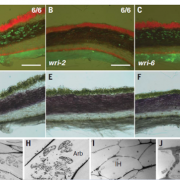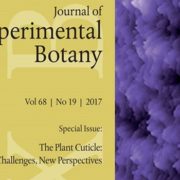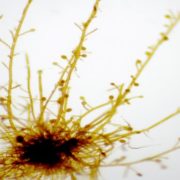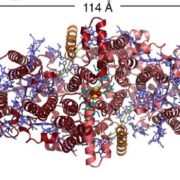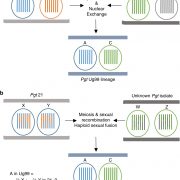Stepwise and independent origins of roots among land plants (Nature)
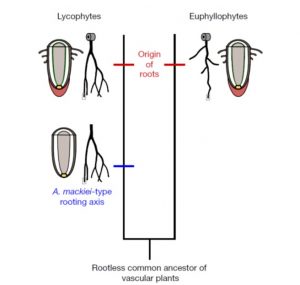 The Rhynie chert (near the village of Rhynie, Scotland; chert is a type of sedimentary rock) is an important site for plant biologists as it holds some of earliest and best preserved land-plant fossils. Hetherington and Dolan examined more than 600 thin sections prepared from this site, specifically looking for fossil evidence of early roots. They focused on Asteroxylon mackiei, an abundant but now extinct early vascular plant. Altogether they found five samples that contained A. mackiei root tips. Strikingly, each of these samples showed a root meristem but not a root cap, indicating that the roots of these extinct plants were covered solely with a sheet of epidermal tissue. These findings suggest two things: that lycophyte roots evolved in two stages, and that the roots of lycophytes and euphyllophytes have independent origins and represent an example of convergent evolution. (Summary by Mary Williams) Nature 10.1038/s41586-018-0445-z
The Rhynie chert (near the village of Rhynie, Scotland; chert is a type of sedimentary rock) is an important site for plant biologists as it holds some of earliest and best preserved land-plant fossils. Hetherington and Dolan examined more than 600 thin sections prepared from this site, specifically looking for fossil evidence of early roots. They focused on Asteroxylon mackiei, an abundant but now extinct early vascular plant. Altogether they found five samples that contained A. mackiei root tips. Strikingly, each of these samples showed a root meristem but not a root cap, indicating that the roots of these extinct plants were covered solely with a sheet of epidermal tissue. These findings suggest two things: that lycophyte roots evolved in two stages, and that the roots of lycophytes and euphyllophytes have independent origins and represent an example of convergent evolution. (Summary by Mary Williams) Nature 10.1038/s41586-018-0445-z


